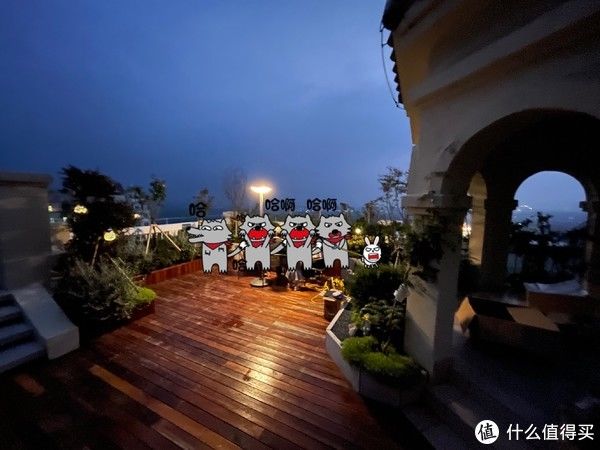追风赶月莫停留,平芜尽处是春山。这篇文章主要讲述Android流行界面结构——Fragment通过ViewPager(带指示器)嵌套Fragment结构的创建方法详解相关的知识,希望能为你提供帮助。
Fragment通过ViewPager嵌套Fragment原创文章,转载请注明出处http://www.cnblogs.com/baipengzhan/p/6287213.html
当前android流行界面结构的一种——Fragment通过ViewPager嵌套Fragment结构目前非常常用,在本篇文章中,
我们一步一步将其创建出来,非常详细的让大家看到这个界面是如何实现的,下面我们开始吧。
首先我们看一下最终的效果动画,以便大家有个最初的印象。
本文章专注于功能的实现,并没有着重于界面的美观,所以大家看到的效果一般,UI效果需要大家进一步修改。

文章图片
主要实现思路:
底部导航栏使用RadioGroup,Activity的布局中创建了一个FrameLayout作为Fragment的容器,
点击RadioButton,动态地向FrameLayout中添加Fragment对象。每个Fragment的布局中创建
一个ViewPager,用来盛放下一级子Fragment,每个ViewPager盛放2个子Fragment对象。其实
到这里,基本结构就已经搭建完毕,顺便写上一个ViewPager指示器,让结构更完整。
【Android流行界面结构——Fragment通过ViewPager(带指示器)嵌套Fragment结构的创建方法详解】此处所用的FragmentLayout + RadioGroup底部导航栏的详细讲解请参看以下文章:
http://www.cnblogs.com/baipengzhan/p/6285881.html
那下面我们就开始一步一步实现这个结构吧。
我们创建一个布局,都要从外到内比较好,先把最外层的结构搭建好,一步一步向内层添加。
首先创建出我们界面的布局,上边一个FrameLayout,中间 一条分隔线,下边一个RadioGroup
我们在一个Activity的布局中创建如下的xml文件:
< ?xml version="1.0" encoding="utf-8"?> < LinearLayout xmlns:android="http://schemas.android.com/apk/res/android" android:id="@+id/activity_main" android:orientation="vertical" android:layout_width="match_parent" android:layout_height="match_parent" > < !--使用FrameLayout当做盛放Fragment对象的容器--> < FrameLayout android:id="@+id/framelayout" android:layout_width="match_parent" android:layout_height="0dp" android:layout_weight="1" /> < !--中间为一条分割线--> < View android:background="@color/divider" android:layout_width="match_parent" android:layout_height="1dp"/> < !--最下边为RadioGroup--> < RadioGroup android:id="@+id/radioGroup" android:orientation="horizontal" android:layout_width="match_parent" android:layout_height="wrap_content"> < !--第一个RadioButton--> < RadioButton android:id="@+id/button_1" android:text="button_1" android:button="@null" android:textColor="@color/radiobutton_color_selector" android:background="@drawable/radiobutton_bg_selector" android:gravity="center" android:layout_weight="1" android:drawableTop="@drawable/radiobutton_pic_selector" android:layout_width="wrap_content" android:layout_height="wrap_content" /> < !--第二个RadioButton--> < RadioButton android:id="@+id/button_2" android:text="button_2" android:button="@null" android:textColor="@color/radiobutton_color_selector" android:background="@drawable/radiobutton_bg_selector" android:gravity="center" android:layout_weight="1" android:drawableTop="@drawable/radiobutton_pic_selector" android:layout_width="wrap_content" android:layout_height="wrap_content" /> < !--第三个RadioButton--> < RadioButton android:id="@+id/button_3" android:text="button_3" android:button="@null" android:textColor="@color/radiobutton_color_selector" android:background="@drawable/radiobutton_bg_selector" android:gravity="center" android:layout_weight="1" android:drawableTop="@drawable/radiobutton_pic_selector" android:layout_width="wrap_content" android:layout_height="wrap_content" /> < !--第四个RadioButton--> < RadioButton android:id="@+id/button_4" android:text="button_4" android:button="@null" android:textColor="@color/radiobutton_color_selector" android:background="@drawable/radiobutton_bg_selector" android:gravity="center" android:layout_weight="1" android:drawableTop="@drawable/radiobutton_pic_selector" android:layout_width="wrap_content" android:layout_height="wrap_content" /> < /RadioGroup> < /LinearLayout>
布局中重要属性说明:
①FrameLayout的android:layout_height属性值为0,android:layout_weight属性值为1。这两个属性值配合使用的意义是:
在竖直方向上FrameLayout占满父控件的剩余空间,也就是占据LinearLayout中除去分隔线和RadioGroup的剩余空间。
关于android:layout_weight属性的详细用法请参考http://www.cnblogs.com/baipengzhan/p/6282826.html
②RadioButton的android:button属性值为@null。这个属性值的意义是,去除RadioGroup默认自带显示的小圆圈。
③RadioButton的android:gravity属性值为center。这个属性值的意义是,使RadioButton的内容(图片和文字)居中。注意,内容默认情况没有居中。
④RadioGroup的android:orientation属性值为horizontal。意为,水平布置其中的RadioButton。
⑤RadioButton的android:textColor属性值为@color/radiobutton_color_selector,是一个颜色状态选择器。颜色状态选择器就是一个定义在res/color目录
下的xml文件,color目录需要我们手动创建。颜色状态选择器的代码如下:
< !--?xml version="1.0" encoding="utf-8"?--> < selector xmlns:android="http://schemas.android.com/apk/res/android"> < item android:state_checked="true" android:color="#f00"> < /item> < item android:color="#f00" android:state_pressed="true"> < /item> < item android:color="#f00" android:state_selected="true"> < /item> < !--没被选中时的颜色--> < item android:color="#000"> < /item> < /selector>
关于状态选择器的更详细知识,请参考文章http://www.cnblogs.com/baipengzhan/p/6284682.html
⑥RadioButton的android:background属性值为@drawable/radiobutton_bg_selector,这一个背景状态选择器,用来改变背景颜色,代码如下:
< !--?xml version="1.0" encoding="utf-8"?--> < selector xmlns:android="http://schemas.android.com/apk/res/android"> < item android:state_selected="true" android:drawable="@color/radiobutton_bg_selected"> < /item> < item android:state_checked="true" android:drawable="@color/radiobutton_bg_selected"> < /item> < item android:state_pressed="true" android:drawable="@color/radiobutton_bg_selected"> < /item> < !--未被选中--> < item android:drawable="@color/radiobutton_bg_normal"> < /item> < /selector>
这个状态选择器是放置在res/drawable目录下的一个普通状态选择器,该选择器的属性android:drawable的属性值不能直接设置颜色,
颜色要封装在values目录下的colors.xml文件中,否则出错。
⑦RadioButton的android:drawableTop属性值为@drawable/radiobutton_pic_selector,是一个普通的状态选择器,用来改变图片,代码如下:
< !--?xml version="1.0" encoding="utf-8"?--> < selector xmlns:android="http://schemas.android.com/apk/res/android"> < item android:state_selected="true" android:drawable="@mipmap/ic_selected"> < /item> < item android:state_checked="true" android:drawable="@mipmap/ic_selected"> < /item> < item android:state_pressed="true" android:drawable="@mipmap/ic_selected"> < /item> < !--未被选中--> < item android:drawable="@mipmap/ic_launcher"> < /item> < /selector>
该状态选择器同样放置在res/drawable目录下,选择器的属性值android:drawable属性值变为了图片,注意代码写到此处时,系统可能不会提示,
需要手动将该属性值添加进来。
更多关于状态选择器的知识请参考文章http://www.cnblogs.com/baipengzhan/p/6284682.html
创建出FrameLayout页面盛放的Fragment
我们创建出对应于四个RadioButton的四个Fragment,每个Fragment中盛放一个ViewPager和一个指示器。下边只列出一个Fragment的写法,剩余的相似,请各位朋友自己写写哦。
下面是Fragment_1的布局:
< ?xml version="1.0" encoding="utf-8"?> < LinearLayout xmlns:android="http://schemas.android.com/apk/res/android" android:orientation="vertical" android:gravity="center" android:layout_width="match_parent" android:layout_height="match_parent"> < !--MagicIndicator,强大的ViewPager指示器--> < !--请将本控件放在ViewPager的上边,否则不显示--> < net.lucode.hackware.magicindicator.MagicIndicator android:id="@+id/magic_indicator" android:layout_width="match_parent" android:layout_height="wrap_content"/> < !--创建ViewPager--> < android.support.v4.view.ViewPager android:id="@+id/viewpager" android:layout_width="match_parent" android:layout_height="match_parent"/> < /LinearLayout>
注意:
这里使用的Viewpager指示器为MagicIndicator,一个第三方框架,兼容性和扩展性很好,本文不详细
阐述它的使用方法了,各位朋友可以先将自己的项目添加了它的依赖,然后按照本文设置即可。这个指示
器在布局中要放在ViewPager上边,否则不显示。
接下来是本文章的重点了,是Fragment_1的逻辑处理,请看Fragment_1的实现代码:
package com.example.radiogroup_framelayout; import android.content.Context; import android.graphics.Color; import android.os.Bundle; import android.support.annotation.Nullable; import android.support.v4.app.Fragment; import android.support.v4.app.FragmentManager; import android.support.v4.app.FragmentPagerAdapter; import android.support.v4.view.ViewPager; import android.view.LayoutInflater; import android.view.View; import android.view.ViewGroup; import net.lucode.hackware.magicindicator.MagicIndicator; import net.lucode.hackware.magicindicator.ViewPagerHelper; import net.lucode.hackware.magicindicator.buildins.UIUtil; import net.lucode.hackware.magicindicator.buildins.commonnavigator.CommonNavigator; import net.lucode.hackware.magicindicator.buildins.commonnavigator.abs.CommonNavigatorAdapter; import net.lucode.hackware.magicindicator.buildins.commonnavigator.abs.IPagerIndicator; import net.lucode.hackware.magicindicator.buildins.commonnavigator.abs.IPagerTitleView; import net.lucode.hackware.magicindicator.buildins.commonnavigator.titles.ClipPagerTitleView; import java.util.ArrayList; import java.util.List; /** * Created by chironmy on 2017/1/13. */public class Fragment_1 extends Fragment {private View mView; private ViewPager viewPager; private Fragment_1_1 fragment_1_1; private Fragment_1_2 fragment_1_2; private List< Fragment> list; private String[] titles = new String[]{"title_1_1","title_1_2"}; @Nullable @Override public View onCreateView(LayoutInflater inflater, @Nullable ViewGroup container, @Nullable Bundle savedInstanceState) { //注意View对象的重复使用,以便节省资源 /*if(mView == null) { mView = inflater.inflate(R.layout.fragment_2_layout,container,false); }*/ //使用以上写法会导致空指针异常,不能使用,应该使用下面的写法mView = inflater.inflate(R.layout.fragment_1_layout,container,false); //找到ViewPager viewPager = (ViewPager) mView.findViewById(R.id.viewpager); //创建ViewPager盛放的Fragment对象 fragment_1_1 = new Fragment_1_1(); fragment_1_2 = new Fragment_1_2(); //创建盛放子Fragment对象的集合 //将Fragment对象加入到集合中 list = new ArrayList< > (); list.add(fragment_1_1); list.add(fragment_1_2); //设置ViewPager //此处作为参数传入的Fragment管理器,一定要使用getChildFragmentManager方法 //因为此处的ViewPager盛放Fragment,而ViewPager所在的父控件也在一个Fragment布局中 //形成了Fragment嵌套 //若使用常用的方法,则容易造成错误,例如内容不显示,重复加载等等。 MyViewPagerAdapter adapter = new MyViewPagerAdapter(getChildFragmentManager()); viewPager.setAdapter(adapter); //设置初始页面 viewPager.setCurrentItem(0); //设置指示器 //根据以往使用VIewPagerIndicator的经验,指示器一般写在 //ViewPager设置完指示器之后进行,否则容易出错 initIndicator(); return mView; }//创建ViewPager适配器 public class MyViewPagerAdapter extends FragmentPagerAdapter {public MyViewPagerAdapter(FragmentManager fm) { super(fm); }@Override public Fragment getItem(int position) { return list.get(position); }@Override public int getCount() { return list.size(); }@Override public CharSequence getPageTitle(int position) { return titles[position]; } }//设置ViewPager指示器,本示例中使用的是MagicIndicator //将ViewPager指示器的设置全部放置到一个方法中,程序结构清晰 private void initIndicator() { MagicIndicator magicIndicator = (MagicIndicator) mView.findViewById(R.id.magic_indicator); magicIndicator.setBackgroundColor(Color.parseColor("#d43d3d")); CommonNavigator commonNavigator = new CommonNavigator(getContext()); commonNavigator.setSkimOver(true); int padding = UIUtil.getScreenWidth(getContext()) / 2; commonNavigator.setRightPadding(padding); commonNavigator.setLeftPadding(padding); commonNavigator.setAdapter(new CommonNavigatorAdapter() {@Override public int getCount() { return titles == null ? 0 : titles.length; }@Override public IPagerTitleView getTitleView(Context context, final int index) { ClipPagerTitleView clipPagerTitleView = new ClipPagerTitleView(context); clipPagerTitleView.setText(titles[index]); clipPagerTitleView.setTextColor(Color.parseColor("#f2c4c4")); clipPagerTitleView.setClipColor(Color.WHITE); clipPagerTitleView.setTextSize(36); clipPagerTitleView.setOnClickListener(new View.OnClickListener() { @Override public void onClick(View v) { viewPager.setCurrentItem(index); } }); return clipPagerTitleView; }@Override public IPagerIndicator getIndicator(Context context) { return null; } }); magicIndicator.setNavigator(commonNavigator); ViewPagerHelper.bind(magicIndicator, viewPager); }}
注意:
①创建ViewPager适配器对象的时候,需要传入一个Fragment管理器,因为ViewPager中盛放的
是下一级Fragment,和ViewPager所在的父容器的Fragment形成了嵌套,此时的Fragment管理
器需要使用getChildFragmentManager方法来获得。若使用getFragmentManager方法,会导致
某一页Fragment不显示数据,报出事务正在进行等等错误和异常,这点一定要注意。
②通过布局填充成对象时,我们有时为了节省资源,常常进行非空判断,使用如下写法:
if(mView == null) { mView = inflater.inflate(R.layout.fragment_2_layout,container,false); }
但实际运行报出空指针错误,改成以下写法会正常运行:
mView = inflater.inflate(R.layout.fragment_1_layout,container,false);
③此处的ViewPager指示器使用的是MagicIndicator,本程序将其封装到一个方法中进行了所有操作,
大家可以参考GitHub上的源码学习,本文就不赘述了,大家使用其他指示器也可以。
ViewPager中的Fragment创建
子Fragment布局
< ?xml version="1.0" encoding="utf-8"?> < LinearLayout xmlns:android="http://schemas.android.com/apk/res/android" android:orientation="vertical" android:gravity="center" android:layout_width="match_parent" android:layout_height="match_parent"> < !--创建TextView--> < TextView android:text="pager_1_1" android:textSize="28sp" android:textColor="#00f" android:layout_width="wrap_content" android:layout_height="wrap_content" /> < /LinearLayout>
子Fragment对象创建
package com.example.radiogroup_framelayout; import android.os.Bundle; import android.support.annotation.Nullable; import android.support.v4.app.Fragment; import android.view.LayoutInflater; import android.view.View; import android.view.ViewGroup; /** * Created by chironmy on 2017/1/13. */public class Fragment_1_1 extends Fragment {private View mView; @Nullable @Override public View onCreateView(LayoutInflater inflater, @Nullable ViewGroup container, @Nullable Bundle savedInstanceState) { //注意View对象的重复使用,以便节省资源 if(mView == null) { mView = inflater.inflate(R.layout.fragment_1_1_layout,container,false); }return mView; }}
子Fragment只是添加了一个TextView而已,用以区别,实际应用中肯定复杂很多,一般使用比较复杂的RecyclerView。
Activity代码实现
package com.example.radiogroup_framelayout; import android.os.Bundle; import android.support.v4.app.Fragment; import android.support.v4.app.FragmentManager; import android.support.v4.app.FragmentTransaction; import android.support.v7.app.AppCompatActivity; import android.view.View; import android.view.ViewGroup; import android.widget.FrameLayout; import android.widget.RadioButton; import android.widget.RadioGroup; import java.util.ArrayList; import java.util.List; public class MainActivity extends AppCompatActivity implements View.OnClickListener{ private RadioGroup radioGroup; private RadioButton button_1; private RadioButton button_2; private RadioButton button_3; private RadioButton button_4; private Fragment_1 fragment_1; private Fragment_2 fragment_2; private Fragment_3 fragment_3; private Fragment_4 fragment_4; private List< Fragment> list; private FrameLayout frameLayout; @Override protected void onCreate(Bundle savedInstanceState) { super.onCreate(savedInstanceState); setContentView(R.layout.activity_main); //初始化页面 initView(); }//初始化页面 private void initView() { frameLayout = (FrameLayout) findViewById(R.id.framelayout); radioGroup = (RadioGroup) findViewById(R.id.radioGroup); //找到四个按钮 button_1 = (RadioButton) findViewById(R.id.button_1); button_2 = (RadioButton) findViewById(R.id.button_2); button_3 = (RadioButton) findViewById(R.id.button_3); button_4 = (RadioButton) findViewById(R.id.button_4); //创建Fragment对象及集合 fragment_1 = new Fragment_1(); fragment_2 = new Fragment_2(); fragment_3 = new Fragment_3(); fragment_4 = new Fragment_4(); //将Fragment对象添加到list中 list = new ArrayList< > (); list.add(fragment_1); list.add(fragment_2); list.add(fragment_3); list.add(fragment_4); //设置RadioGroup开始时设置的按钮,设置第一个按钮为默认值 radioGroup.check(R.id.button_1); //设置按钮点击监听 button_1.setOnClickListener(this); button_2.setOnClickListener(this); button_3.setOnClickListener(this); button_4.setOnClickListener(this); //初始时向容器中添加第一个Fragment对象 addFragment(fragment_1); }@Override public void finish() { ViewGroup viewGroup = (ViewGroup) getWindow().getDecorView(); viewGroup.removeAllViews(); super.finish(); }//点击事件处理 @Override public void onClick(View v) { //我们根据参数的id区别不同按钮 //不同按钮对应着不同的Fragment对象页面 switch (v.getId()) { case R.id.button_1: addFragment(fragment_1); break; case R.id.button_2: addFragment(fragment_2); break; case R.id.button_3: addFragment(fragment_3); break; case R.id.button_4: addFragment(fragment_4); break; default: break; }}//向Activity中添加Fragment的方法 public void addFragment(Fragment fragment) {//获得Fragment管理器 FragmentManager fragmentManager = getSupportFragmentManager(); //使用管理器开启事务 FragmentTransaction fragmentTransaction = fragmentManager.beginTransaction(); //使用事务替换Fragment容器中Fragment对象 fragmentTransaction.replace(R.id.framelayout,fragment); //提交事务,否则事务不生效 fragmentTransaction.commit(); }}
可以看到Activity中的代码非诚简单,只是动态的添加Fragment对象而已。
注意:
以上代码中很多可以优化,比如xml文件中大量的属性可以提取样式,等等,这里列出只是为了方便更多水平的读者读懂,请谅解。
其实Fragment对象的容器不止FrameLayout一种,只是这种结构容器对Fragment支持比较好,更为常用,各位小伙伴可以使用其他容器尝试哦,原理是一样的。
本方式利用动态添加Fragment对象到Activity中,其实我们也可以有个设想,使用静态方法添加到容器中,各个Fragment相互重叠,只有一个显示,我还没尝试,
今后有机会了可以这样试一下,各位小伙伴可以试试哦。
好啦,FrameLayout + RadioGroup结构我们到此就讲解完成了,感谢阅读!
推荐阅读
- 安卓笔记20170118
- Android群英传笔记——第五章(Android Scroll分析)
- Android学习——Fragment与Activity通信
- android 好的源码链接
- Android Java使用JavaMail API发送和接收邮件的代码示例
- 移动端UI设计越来越流行的高斯模糊(Gaussian blur)和毛玻璃效果(磨砂效果),如何使用Android RenderScript简单实现()
- android开发学习——day4
- Android开发首选教程Android开发从入门到精通精华教程列表
- 安卓开源项目周报0117












